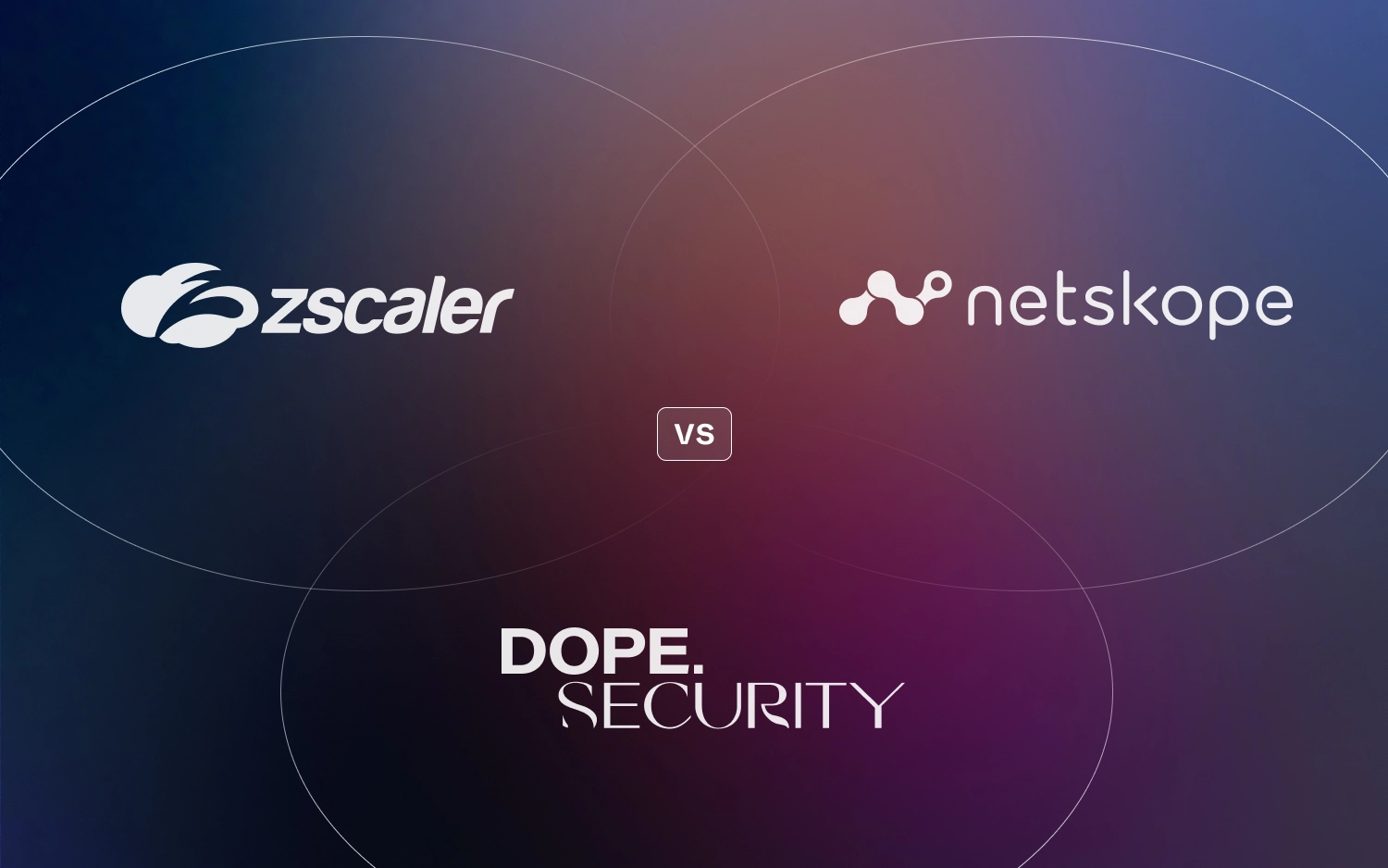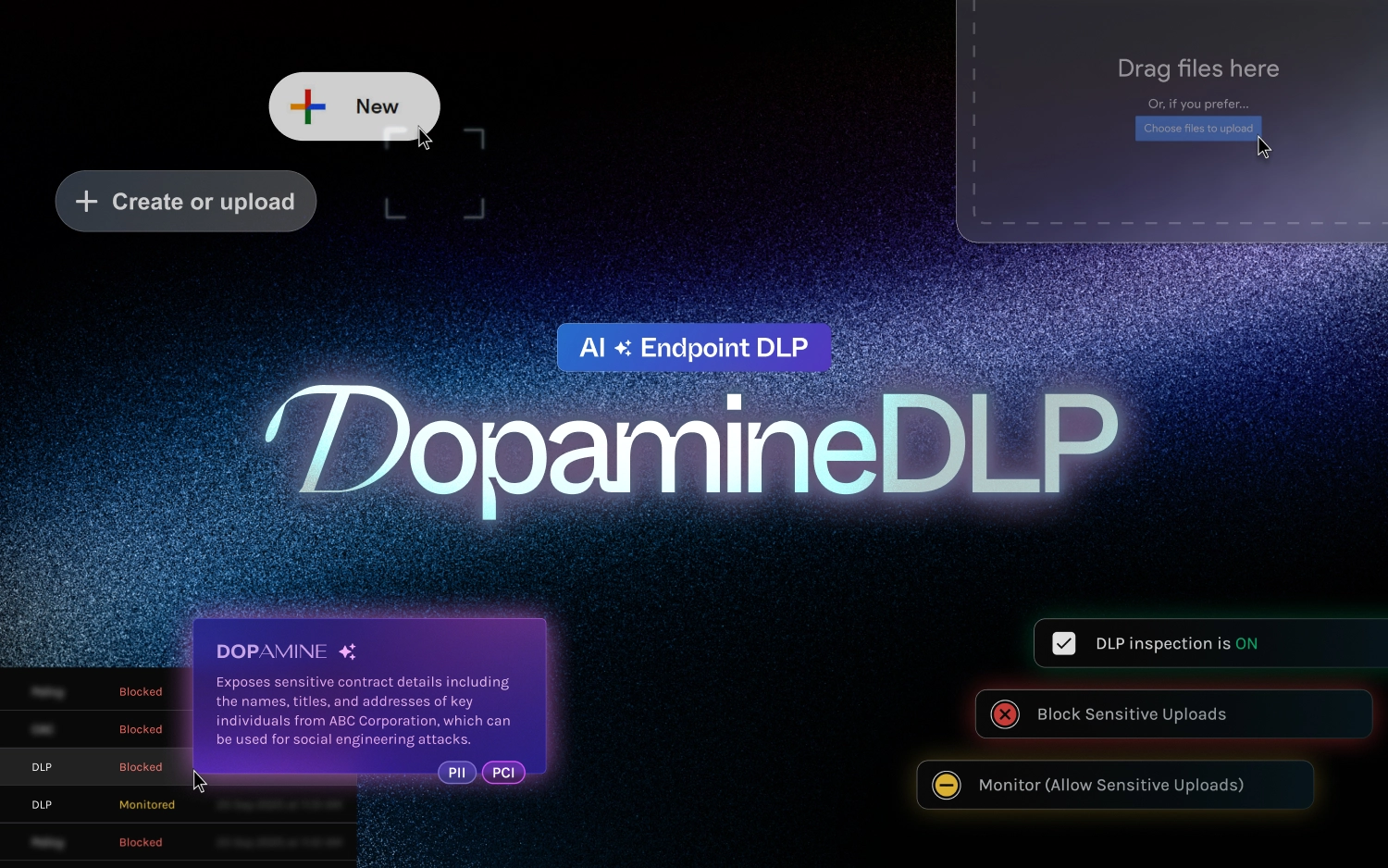Zscaler vs Netskope vs dope.security: Which protects users fastest?

If you ask users what they want from security, they won’t say “a bigger policy set.” They’ll say, “Please don’t slow me down.” Speed is the part of security people actually feel. Yet the way different Secure Web Gateway (SWG) products move traffic can add invisible stopovers that turn a quick hop into a cross-country journey. Let’s compare Zscaler, Netskope, and dope.security through that lens. Which one keeps everyday browsing fast, apps unbroken, and privacy intact without demanding a pilot’s license to operate?
The simple reason “fast” feels different from vendor to vendor
Imagine two ways to fly from San Jose to New York. One is a direct flight; you take off, you land, you’re done. The other forces a connection through a hub; you still reach New York, but you’ve added a takeoff, a landing, a taxi, a gate change, and the possibility of a delay. Traditional cloud-proxy SWGs work a lot like that second option. Zscaler and Netskope will route your traffic to their data centers first for inspection, then forward it to the destination. That extra leg, the backhaul, adds hops that can cost time and energy.
dope.security flips the flight plan. Instead of sending traffic to a vendor data center, inspection happens on the device. The request goes straight to its destination, like a direct flight. Fewer hops means quicker page loads, fewer spinning wheel moments, and less opportunity for video meetings, previews, or logins to lag.
What everyday speed really looks like
When people talk about speed, they’re rarely speaking in milliseconds, they’re describing a feeling. Does the homepage load quickly? Does the file preview show up? Does my video load? With a traditional cloud-proxy model, those signals depend on how close your users are to the provider’s points of presence and if those PoPs are active or undergoing maintenance. With an endpoint-based model like dope.security, those factors matter less because traffic isn’t detouring. The device inspects and evaluates the request locally and lets it go directly to the end destination. Less middle-mile magic, more “it just works.”
Breakage, the silent killer of trust
SSL and traffic inspection is a powerful and required security feature, but it’s also where some breakage can creep in. An unexpected certificate prompt, a thumbnail that refuses to render, a video that hangs at 98%—all of these are the kind of small cuts that generate tickets and fray confidence. Typically, when SSL inspection errors occur, admins must wait for a user to realize there is an issue, log a support ticket, and then figure out what is causing it. Groups running Zscaler or Netskope often end up maintaining long exception lists or creating complicated allow rules to keep the most sensitive flows happy. When an SSL inspection error occurs with dope.security, the dope.endpoint will report the URL/application to the dope.cloud. Admins can view these errors from the notification panel and add them to bypass lists across the organization in a few clicks.
Privacy isn’t a nice-to-have—it’s part of performance
Performance and privacy are close cousins. The more places your traffic and user data travel, the more copies and logs you create. Cloud-proxy models process traffic in provider environments. Endpoint-based inspection keeps analysis local by design and reduces the number of third-party systems that ever see sensitive data. Security teams like that for obvious reasons; legal and compliance partners like it even more.
A 10-minute test you can run today
You don’t need a lab to compare these products. Open a laptop, pick five representative sites, think of a major news site, your SSO portal, your file-sharing tool, a collaboration app, and a video platform, and time how long it takes for meaningful page content to appear. Repeat the same test with each product active. Then do one normal task in each SaaS app, such as uploading a document or joining a meeting. If you want to be extra methodical, open your SWG console and review what user and URL data are being stored, and where. What you’re looking for is a browsing experience that’s indistinguishable from your baseline, logins that complete without surprises, meetings that join on the first click, and a minimal footprint of sensitive data leaving the device. Fun fact, the only solution you can test this instantly is dope.security, thanks to the free production trial you can sign up for completely on your own, no sales call required.
TCO without the fine print
Licenses are the numbers you see, operational drag is the number you feel. Cloud backhaul can be perfectly workable, but when slowness or breakage shows up, teams pay in troubleshooting time, exception wrangling, and extra helpdesk tickets. Endpoint-based inspection removes the detour and, with it, a chunk of that administrative overhead. Faster end-user experiences translate into fewer tickets and fewer lost minutes across thousands of workdays.
So…who’s fastest?
If you remove a flight connection, you usually land sooner. That’s the idea behind the endpoint-based dope.swg. Zscaler and Netskope offer broad suites and massive clouds that serve many enterprises well, particularly those already standardized on their ecosystems. But if your top requirement is the speed and smoothness users feel, and you want less tuning, fewer exceptions, and stronger privacy by design, the direct-flight approach pays dividends.
Ready to feel the difference?
Run the ten-minute test in your own environment. If the browsing experience with dope.security isn’t as fast, or faster, than your baseline, keep what you have. If it is, let’s talk about a pilot that’s measured in days, not quarters.











